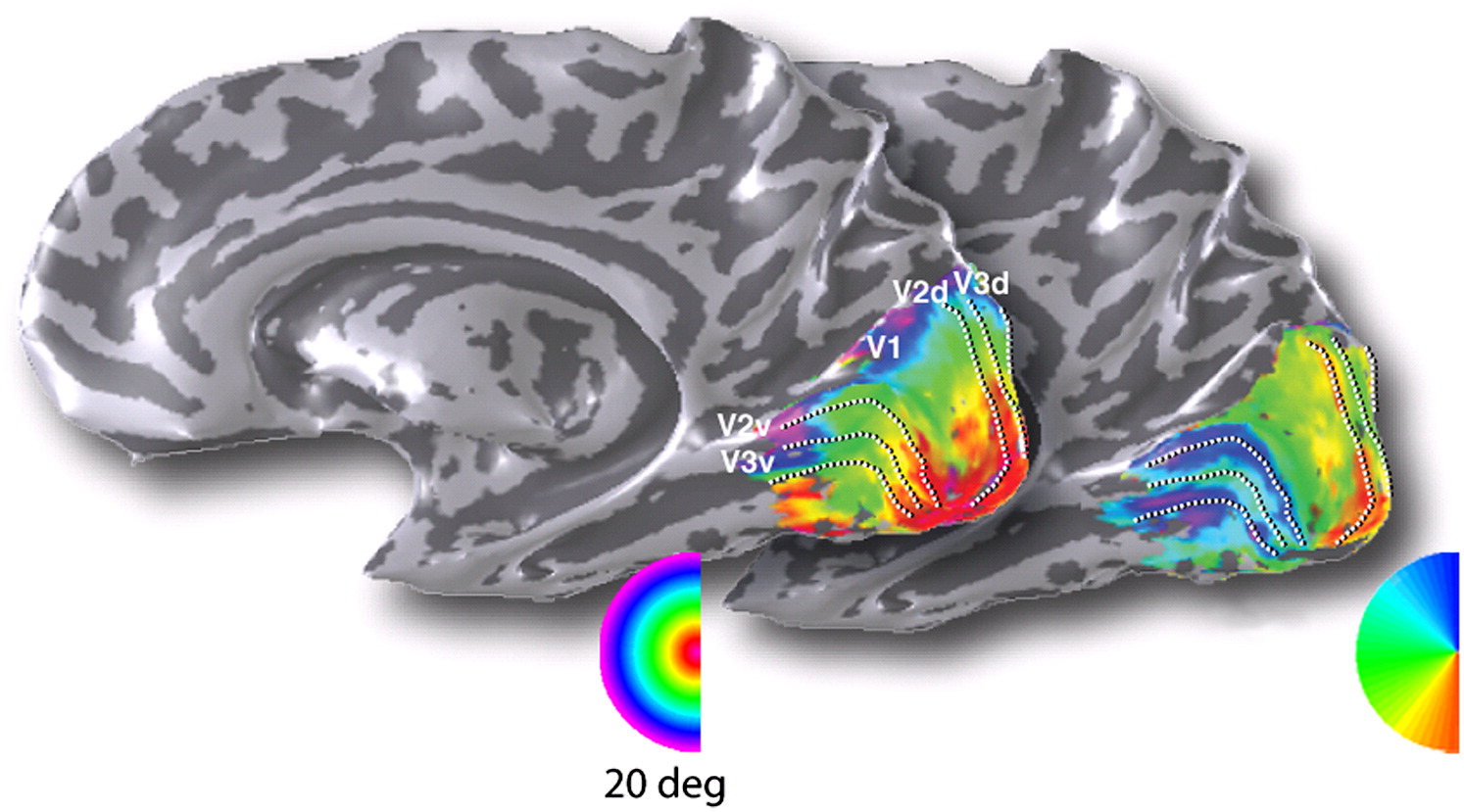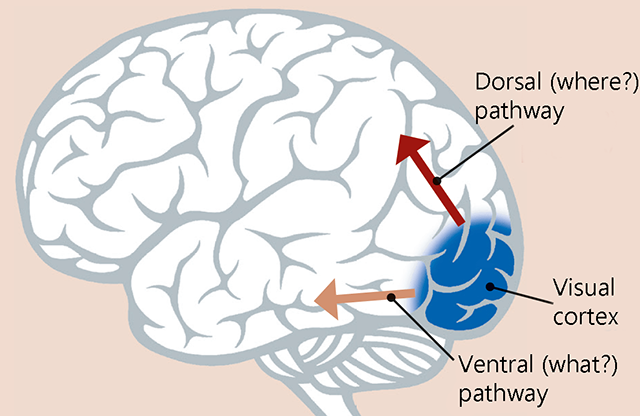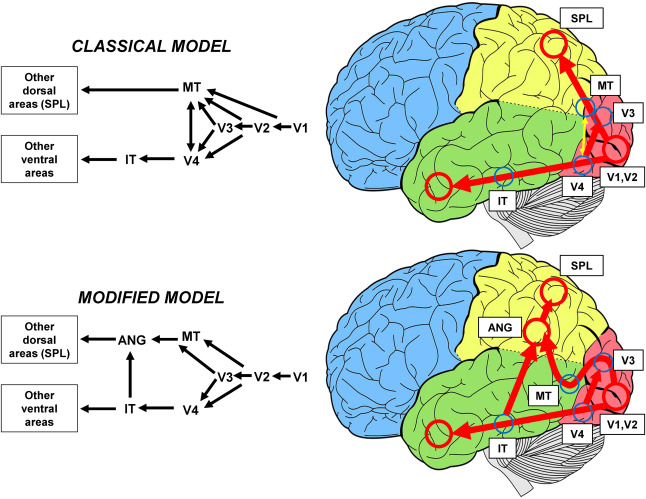Ventral and Dorsal Streams of Visual Information
Jim Hutchins
Objective 15: Describe the anatomy and function of the dorsal and ventral pathways for visual information.

If we zoom out quite a bit, we can also see a pattern to the mapping of visual fields onto the contralateral visual cortex. The central (macular) part of vision occupies a relatively large area, about 1/3 to ½ of primary visual cortex depending on the person. This is nearest the posterior end of the calcarine sulcus with the inferior contralateral visual field represented on the upper bank of the sulcus and the superior contralateral visual field represented on the lower bank of the sulcus.
Note that the visual field is still split between right and left. The visual hemifields are “stitched together” at a higher level of visual processing. This process is so seamless (sorry) that we don’t generally notice a line down the middle of our visual field. Certain rare lesions of the visual cortex can sometimes cause patients to perceive this, however.

From area 17, visual information begins to flow to higher-order visual processing in areas 18 and 19. The magnocellular stream information begins to coalesce in a channel called the dorsal stream (after its location in macaque monkeys, not in humans). The dorsal stream is also called the “where” pathway. It is fast; its main concern is the location of fast-moving stimuli that might cause harm or represent prey, like a rock flying towards your head or a flightless bird that might be good eating for your family.
There is a “what” pathway as well. This is the slower pathway and is also called the ventral stream after its position in the macaque. It conveys color information and is quite extensive in humans. Face recognition and body recognition regions are included in this pathway. For example, humans are quite sensitive to the movement of legs and arms in their fellow humans. It’s even possible for people to make accurate guesses about the gender of a stick figure made from using straight lines to connect the joints (ankle, knee, hip, etc.) after watching it move on a computer screen for several seconds.

This recent paper by Choi et al. proposes a model for the structures involved in the dorsal and ventral streams in the human brain. V1 is the primary visual cortex; V2, V3, and V4 are successive rings of cortex surrounding the primary visual cortex.
The ventral stream begins with V4, and continues to inferior temporal (IT) cortex.
The dorsal stream begins with medial temporal (MT) cortex, and continues to the angular gyrus (ANG) and the superior parietal lobule (SPL).
The ventral and dorsal streams interconnect via a pathway between inferior temporal and the angular gyrus.
Media Attributions
- Visual field maps © Brian A Wandell, Serge O Dumoulin, and Alyssa A Brewer is licensed under a All Rights Reserved license
- Dorsal and ventral pathways © Community Eye Health Journal adapted by Jim Hutchins is licensed under a CC BY-NC (Attribution NonCommercial) license
- Dorsal and ventral stream structures © Sang-Han Choi, Gangwon Jeon, Young-Bo Kim, and Zang-Hee Cho is licensed under a CC BY (Attribution) license

